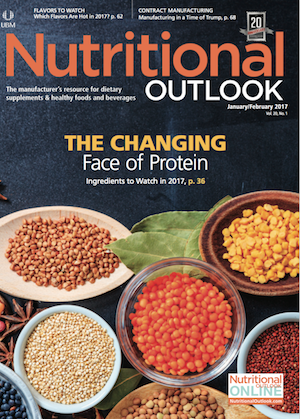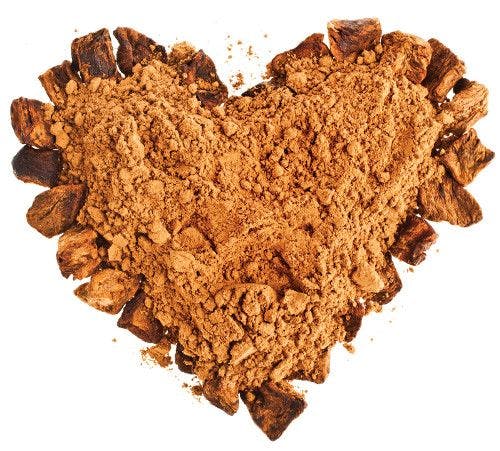2017 Ingredient Trends to Watch for Food, Drinks, and Dietary Supplements: Prebiotics
Prebiotic insiders insist that the category could take off in the next few years as more consumers begin embracing the health benefits of prebiotics.
Photo © Shutterstock.com/photofriday

Prebiotics could be one of the most promising but least understood ingredients in the supplements aisle. Although consumers have embraced the concept of supplementing with healthy bacteria (probiotics), fewer consumers understand that the healthy bacteria already in the gut need to be fed (via non-digestible soluble fibers called prebiotics) in order to survive, thrive, and ultimately impart the benefits of a balanced microbiota. Prebiotic insiders insist, however, that the category could take off in the next few years as more consumers begin embracing the health benefits of prebiotics.
Part of that movement will grow alongside awareness of the microbiome, which is advancing thanks to prestigious research efforts like the Human Microbiome Project. In fact, says Sandra Saville, chief nutrition officer and founder of prebiotics brand Prenexus Health, “A key reason to watch prebiotics is the emphasis on research focused on the microbiome. There have been a number of scientific studies demonstrating how the microbiome affects human health, and there is an entire industry being developed to focus on the microbiome. Research on prebiotics has shown that they can beneficially impact the microbiome, providing benefits for digestive health, management of blood sugars and cholesterol, immune health, and more.”
In the meantime, consumers-and even supplement makers-still need to learn to better distinguish between the different types of prebiotic fibers. “Right now, they are kind of treated like they’re the same thing,” similar to the way some erroneously lump all probiotic strains together instead of realizing that each probiotic strain offers a different benefit, says Jack Oswald, CEO of prebiotic brand IsoThrive.
There are a handful of recognized prebiotic fibers on the market, and suppliers make a case for each of these prebiotic types. The longtime leaders are inulin fiber and the carbohydrate fructooligosaccharides (FOS), both commonly found in plants like chicory root or Jerusalem artichoke. Beneo (Manheim, Germany) specializes in inulin and FOS. According to Anke Sentko, Beneo’s vice president of regulatory affairs and nutrition communications, these prebiotics are “the only established dietary fibers that can be called scientifically proven prebiotics…This prebiotic effect established for inulin and [FOS] is a bioactive effect independent from the fact of being a fiber. So, with chicory root fibers, you get two in one, the fiber enrichment and the prebiotic effect.” Another company, prebiotics brand Prebiotin, markets a unique, blended FOS-inulin ingredient (an “oligofructose-enriched inulin”) that the company says the National Institutes of Health is currently studying in two clinical studies on prebiotics. Greg Cooper, Prebiotin’s director of sales, says that combining a short-chain molecule like FOS with a long-chain molecule like inulin provides a “full-spectrum effect,” because one breaks down more slowly and one more quickly, “allowing the prebiotic fiber to flow through the entire colon.”
And then there are prebiotics newer to the market, like galactooligosaccharides (GOS), xylooligosaccharide (XOS), and maltosyl-isomaltooligosaccharides (MIMO). Saville’s company, Prenexus, focuses on XOS derived from fiber cane. According to Saville, “Newer/novel prebiotics such as [XOS] specifically target the good bacteria and thus deliver health benefits at a lower dose.” Prebiotics brand IsoThrive focuses on the prebiotic carbohydrate MIMO, which the company says does not cause the gas, bloating, and other intestinal distress associated with some other prebiotic fibers like inulin.
Oswald points out that different types of prebiotics may suit different needs. “You need to figure out what the right mix for you is, and I think we’re still at the point where most [consumers] won’t know how to do that." Also, he says, “the industry has to own up to the fact that no one product is the be all, end all.”
Prebiotin’s Cooper says that once prebiotics gain traction, their growth will happen very quickly, much as it did with plant proteins when “you don’t see it until the wave hits you.” For now, he says, “Buyers and store owners and even store personnel don’t understand prebiotics because it’s so new. This is going to take off because of the science, and the science will prevail. As it does, the naturopaths and the clinicians and nutritionists-the influencers-are going to jump on board, and when that happens, I think you’ll see this big shift in the way they treat their gut health”-and the way they treat prebiotics. “But it’s a process. While awareness in 2017 is totally going to grow, this evolution takes four or five years,” he adds.
Even if consumers don’t latch on to the prebiotic-supplement movement right away, chances are they’ll be getting these ingredients more often in the food products they buy because more functional-food manufacturers are including prebiotic ingredients in their products. “When you think about General Mills, Quaker Oats, Pfizer-all these major companies, whether it’s a drug company or food company-when they’re all looking at prebiotic fibers (and this has been going on for a number of years now), there’s something pretty big on the horizon,” says Cooper.
For example, more foods now count chicory root/inulin as an ingredient. Sentko says Beneo expects to see many new products launching with inulin. SPINS also forecasts growth in the use of chicory root in 2017. “We predict that chicory will make its move into a variety of new formulations this year,” the market researcher said in its “Top Trend Predictions for 2017” report.[1] Chicory root is already appearing in more beverages like tea and coffee, says SPINS. Not only that, but “we’ve already seen prebiotic fiber grow 33% across shelf-stable wellness bars and gels, appearing in Natural Standard brands like Mediterra as well as Conventional Natural OhYeah! Bars,” SPINS says. “And in terms of treats, we’ve also noticed chicory root extract and inulin as ingredients in a growing number of SO Delicious frozen dairy-free desserts."
“We’re watching to see where else chicory might put down roots,” SPINS concluded.
Prebiotic insiders remain confident that this is a category to place your bets on overall. “It is important to understand that we are early in the category development for prebiotics, but we know there is growing consumer interest. According to a recent Food & Health Survey[2] published by the International Food Information Council, one-third (33%) of Americans are trying to consume probiotics, and more than 10% are trying to consume prebiotics,” says Steve Hanson, executive vice president of marketing and business development, Prenexus Health.
Market forecasters are very optimistic about prebiotics, too. Market researcher Grand View Research estimates that the global prebiotics market will reach $7.11 billion by 2024, citing “rising investment in the food and beverage industry for innovation and development of new food products enriched with prebiotics.”[3]
Also read:
At IFT, Fiber Suppliers “Confident” FDA Will Define Their Ingredients as Dietary Fibers
Will Consumers Learn to Love Prebiotics?
2017 Ingredient Trends to Watch for Food, Drinks, and Dietary Supplements:
Plant Protein vs. Dairy Protein
Hemp CBD, Vinpocetine, and Kratom
Jennifer Grebow
Editor-in-Chief
Nutritional Outlook magazine
jennifer.grebow@ubm.com
References:
[1]SPINS, “The SPINS Product Library Team’s Top Ten Trend Predictions for 2017"
[2]
[3]Grand View Research, “Prebiotics Market Projected to Reach $7.11 Billion by 2024,” May 2016

Prinova acquires Aplinova to further increase its footprint in Latin America
April 7th 2025Prinova has recently announced the acquisition of Brazilian ingredients distributor Aplinova, which is a provider of specialty ingredients for a range of market segments that include food, beverage, supplements, and personal care.

























